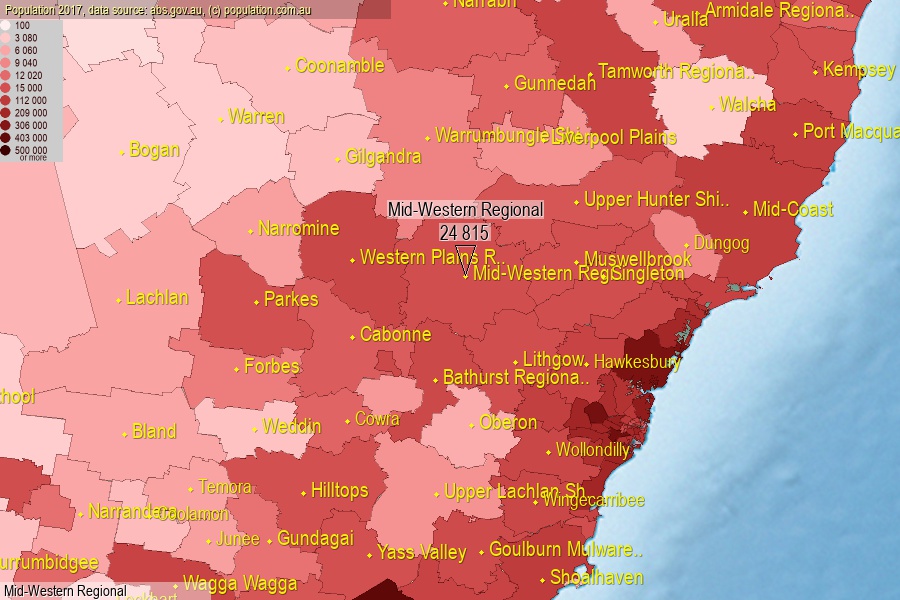 population.com.au
population.com.auLast official estimated population of Mid-Western Regional Area (as Local Government Area) was 24 815 people (on 2017-06-30)[2]. This was 0.10% of total Australian population and 0.312% of NSW population. Area of Mid-Western Regional is 8 752.30 km², in this year population density was 2.84 p/km² . If population growth rate would be same as in period 2016-2017 (+1.1%/yr), Mid-Western Regional population in 2025 would be 27 076. [0]



Click to enlarge. Mid-Western Regional is located in the center of the images.
Population [people], population density [p./km²] and population change [%/year] [2]
[1996-2001] +0.74 %/Y
[2001-2002] 0.00 %/Y
[2002-2003] -0.64 %/Y
[2003-2004] -0.71 %/Y
[2004-2005] -0.27 %/Y
[2005-2006] -0.03 %/Y
[2006-2007] +1.14 %/Y
[2007-2008] +1.37 %/Y
[2008-2009] +1.28 %/Y
[2009-2010] +1.36 %/Y
[2010-2011] +1.08 %/Y
[2011-2012] +1.40 %/Y
[2012-2013] +1.71 %/Y
[2013-2014] +1.34 %/Y
[2014-2015] +1.31 %/Y
[2015-2016] +0.71 %/Y
[2016-2017] +1.10 %/Y
[0] Calculated with linear interpolation from officially estimated population
[1] Read more about LGA and Australian Statistical Geography Standard (ASGS) on abs.gov.au
[2] Population data from Australian Bureau of Statistics (Population and density: 2017; change: 2016-2017)
[3] Digital Boundaries: Australian Statistical Geography Standard (ASGS) 2016.